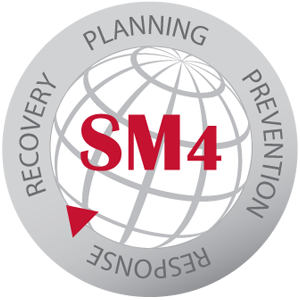A colleague gifted me a great book: “Upstream: The Quest to Solve Problems Before They Happen” by Dan Heath. Heath’s book is based on the premise that it is much more effective to walk upstream and determine why people are falling in a river than to run downstream repeatedly and jump in to save people who are drowning. The long-term preventative costs of buying ropes and life preservers are considerably more expensive than identifying how to solve the issue before it happens.

The book discusses the barriers to upstream thinking and then poses seven questions for upstream-thinking leaders. Each of the questions helps us create a forward-looking, proactive and predictive safety management system. Applying Heath’s questions should help you frame the best SMS objectives, safety performance indicators (SPIs) and safety performance targets (SPTs).
1. How will you unite the right people?
Building an upstream safety culture begins with assembling an active team with people who want to believe they are chosen, and not obligated, to work for a cause greater than themselves. This starts at the top by assuring you have an active safety committee with the right people, resources and tools to be a strategic SMS change agent.
Make sure committee membership is made up of employees from every area of your company, top to bottom. While it may seem ideal that everyone on your committee passionately talks about safety, you’ll discover that there will be least one or two “visionary cheerleaders” who will keep committee members focused on upstream objectives.
2. How are you changing the system?
As your employees move any asset or deliver any service, your safety and quality efforts cannot remain static. Either your SMS is getting better or it is getting worse. Heath’s book explains that although upstream thinking takes much more effort to produce results, its cost is much lower than putting patches on current protection efforts. Upstream thinking tells us it is a better investment to build a footbridge than to buy a 10-year supply of life preservers.
3. Where can you find the points of leverage?
When it comes to preventing problems in a complex system, finding the right protection lever and organizational fulcrum becomes difficult. “Rightness” of protection in safety management is one of the few operating areas that has direct correlation to returns on safety investments. For example, Category III capabilities and synthetic vision might be the ultimate point of leverage for a particular aviation safety application, but its costs and/or availability may be prohibitive.
Your safety committee may need to implement several workaround solutions to leverage the complete protection that one uber-tool could provide. The committee’s objective is to manage the sum of their outputs to achieve the leverage needed to move the safety dials.
4. How do we get early warnings of the problem?
Creating any type of sustainable early warning system for safety management problems requires the safety committee to manage four key early warning elements:
- Risk knowledge—the systematic assessment of hazards and vulnerabilities
- Monitoring tools—logically accurate and timely forecasting of exposure to hazards and events
- Dissemination & communication—clear and timely distribution of upstream warnings
- Response capability—the ability to provide adequate resources and timely distribution to all who are at risk
5. How will we know we're succeeding?
Heath’s book states, “With downstream work, success can be wonderfully tangible, and that’s partly because it involves (easier replacement or) restoration…” However, upstream success requires visualizing a future state that may not be so evident.
The safety committee must be cognizant of designing near-term objectives that may cloud or impede a long-term outcome. Heath describes these efforts as “ghost victories” (latent error decisions) that can harm the organization and hinder the committee in reaching its upstream goals and objectives. Some would ask if achieving an uncluttered deck design on the Titanic was a ghost victory that created the error of not having enough lifeboats.
6. How will we avoid doing harm?
Designing upstream solutions to complex systems may require the untangling of contradictory strands of common sense. Your safety committee needs constant system performance and status monitoring to discern these effects. Wise committees may try to anticipate second-order effects beyond their immediate work but realize they cannot anticipate every outcome within their SMS treatment. Precise feedback loops keep their SMS upstream.
7. Who will pay for what does not happen?
In a reactive SMS world, the conventional wisdom is that safety sells. In an upstream SMS world, finding the solution that optimizes production and protection makes a positive contribution to your company’s bottom line. Conventional SMS ROI studies indicate that a $1 investment in hazard reduction returns $2-$6 savings in LTI, equipment damage and lost productivity hours.
Interested in learning more about safety objectives, SPIs and SPTs? Check out the other resources from Baldwin:
1. Blog post: Measuring for Success: How's Your SPIs and SPTs?
2. Safety Chats: August 10, 2020 - Revisiting SPIs, Sept. 21, 2020 - Using Objectives to Improve Safety in the Organization-Part 1, Sept. 28, 2020 - Using Objectives to Improve Safety in the Organization-Part 2
3. Baldwin Virtual Training Course: Using Safety Objectives to Improve Safety Outcomes (Earn 1 CAM credit), Measuring for Success: SPIs and SPTs (Earn 0.5 CAM credit)
About Global Aerospace SM4 Aviation Safety Program
The Global Aerospace SM4 Safety Program has revolutionized the way insurance specialists help their clients achieve higher levels of operational safety. SM4 was built on the concept of integrating four
critical safety components: planning, prevention, response and recovery. Its mission is to help organizations manage risk, enrich training efforts, strengthen safety culture and improve safety management systems. https://sm4.global-aero.com/
Global Aerospace SM4 Aviation Safety Program Media Contact
Suzanne Keneally
Vice President, Group Head of Communications
+1 973-490-8588
Release ID: 125557

